
This blog post DOES contain affiliate links of related products I love and they might even be pictured. If you click on a link and purchase a product (or service) it costs you nothing, you MIGHT even get a discount, and I MAY even receive a SMALL commission. This helps me to buy and drink coffee ☕️ in order to keep me awake and provide you with amazing free content 💗 Thank You for supporting my content 💋
It doesn’t matter if you’ve slid from pose to pose through a tranquil restorative practice, cuddled up on your bolster, and wrapped up in a warm blanket…
OR you poured a gallon of your own sweat onto your now slip-and-slide of a yoga mat while you balanced on your feet, hands, and head through 50 minutes of a level 3+ hot yoga class.
When you get to the much-deserved final relaxation pose (savasana or corpse pose) your mind might be aflutter as you go through your to-do list filled with the meals you need to make for the week and question whether you put parsley on your shopping list, or you if left it off – again…
OR you slither into savasana and nod off to sleep 😴.
No matter how you move through your yoga practice, and how you land in savasana (shavasana), it will still be a struggle – yes – for all of us.
How to do savasana (physically) is simple. But when you get down to the essence of Savasana you’ll discover it’s a hard pose (some say the hardest pose), but one thing makes it easier: set yourself up correctly. Both physically and mentally – in turn – you set yourself up for success.
Watch the video below for ways to physically set yourself up. Read on for ways to find success mentally.
The question should be “Why asana?” (why yoga poses?)
Savasana (shavasana or corpse pose) was always the goal, but the poses were created to make it easier to be still in meditation.
We practice asana – yoga poses – to tire the physical body to make it easier to lie still. The practice of moving with the breath, or focusing on the breath, is there to help still the mind. It gives us another point to focus on instead of the train of thoughts and stories in our minds.
As we move through a yoga practice the thoughts in the mind slow down and we begin to turn inward and focus on what we’re doing, feeling, and experiencing.
Not to split hairs, but savasana is a form of meditation. You can ALSO meditate after savasana, but the end goal of savasana is to relax the body and the mind – and how is that not meditation 🤔?
From reduced pain, anxiety, and depression, to an increase in brain gray matter, the ability to focus and concentrate, and a more positive outlook on life, there are countless studies that show the benefits of meditation and mindfulness. If you want to see one way you can benefit from mindfulness practices, read this blog post on 8 ways mindfulness practices have been shown to reduce anxiety.
Aside from meditation, I’ve heard many yoga teachers say “savasana is to help integrate what you experience during asana (the physical practice)”. Sure! That might happen too. During savasana, there’s time and space for your brain and body to communicate uninterrupted without stories and predetermined expectations. This allows you to sense and experience versus expect and create stories around what you think you perceive.
Again, this is a form of mindfulness/meditation.
Savasana is about finding stillness – in body and in mind.
Typically it’s easier to find stillness in the body after moving through a yoga practice, it’s stillness of the mind that can be difficult. When you’ve got too much going on in the mind, the movement of thought can venture into the body and cause the wiggles.
Yeah, savasana is hard. It’s hard to settle the mind and/or body when in savasana, and here is why.
In yoga, the chatter in the mind (citta vritti/chitta vritti) shows up in the body. It clutters the mind and creates this unsettled feeling in the body as well.
You know those stories you relive, or the conversations you have with yourself, in your mind?
They take space, and when the mind is full, they move into the body.
Anxiety and those constant thoughts in the mind have the same energy in yoga: rajas. Rajas (read more about the gunas) is movement, passion, fire, and activity.
You may not feel anxious, but the energy is the same.
All those unnecessary thoughts in your mind take up space, they cloud the mind, and those resources could be used for other, more productive, things.
“Find the space between the thoughts”
Savasana gives you an opportunity to lie stationary – to try to calm the mind – to find space and clarity for yourself.
Sign up for my newsletter and get my 12 ways to still the chatter in your mind during savasana.
Sign up for my newsletter and get my 12 ways to still the chatter in your mind during savasana AND 1 min checklist to reduce stress, anxiety, and pain + guided audio.
Privacy is important. I won’t sell your info. I promise.
As with any yoga pose, there are many variations to savasana. The traditional is accessible for most, but have a read below, and don’t forget to check out those other options here.
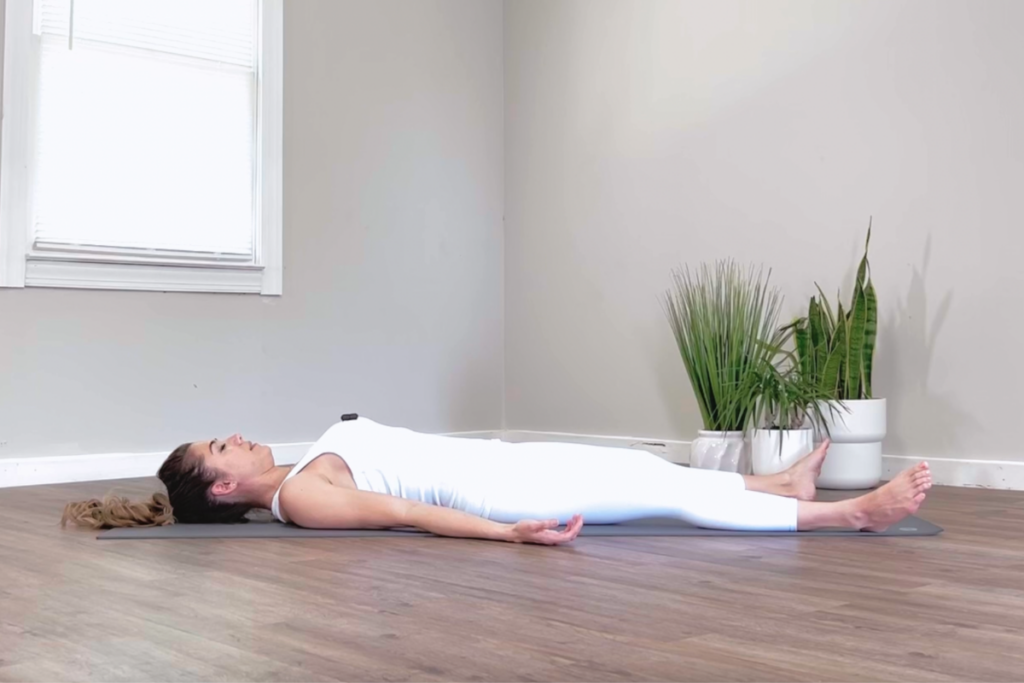
<<photos>>
If the purpose of savasana is to calm the body and mind, then it’s important to be as comfortable as possible. Although, traditional savasana is one of the most accessible postures, it’s not always the most comfortable for everyone. There are specific reasons to do some of the variations below, but there is no reason why you couldn’t/shouldn’t try a variation if you think it’ll be more comfortable, or if you’re curious.
Reason: This is the traditional way to do savasana. It helps to withdraw the sense (5th limb of yoga – pratyahara), by shutting one off – sight.
How to do it:
Reason: You feel unsettled or unsafe when you close your eyes. This is a good option for anyone with physical/sexual trauma or PTSD.
How to do it:
You can do any of these variations not only for the reasons listed, but the most important thing is to feel comfortable.
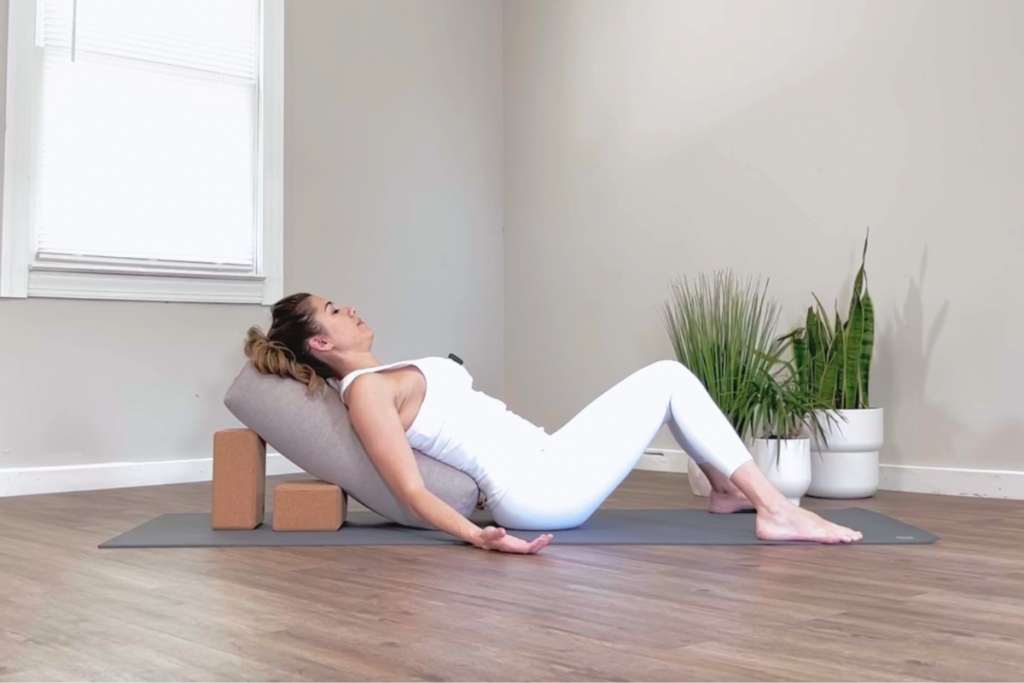
<<photo>>
Reason: You need to keep your head above your heart, you get indigestion, or you’re pregnant.
How to do it:
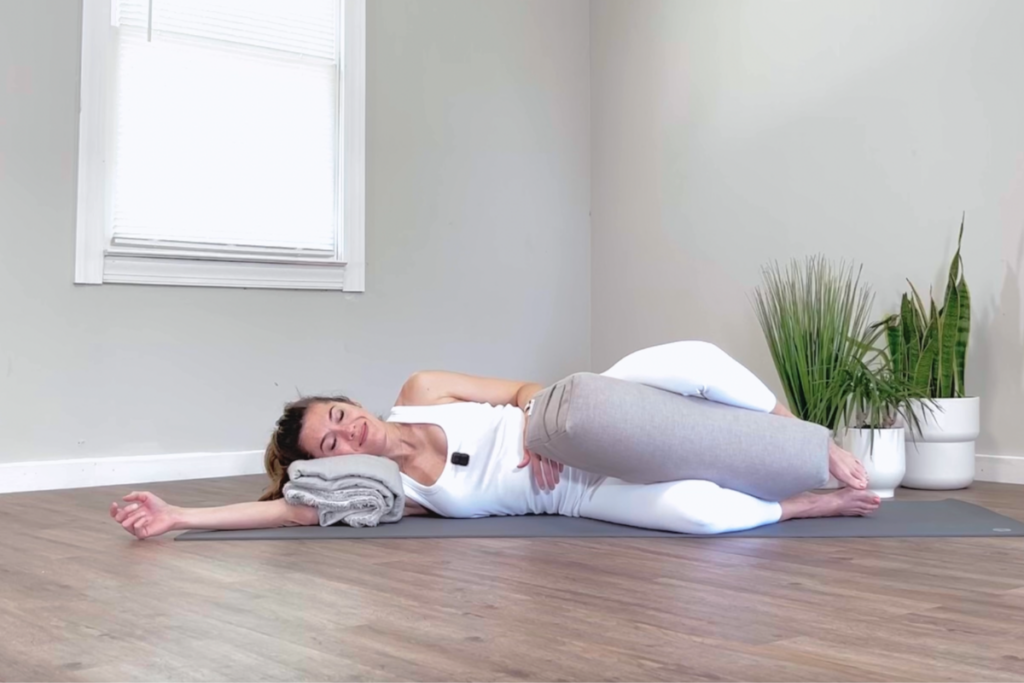
<<photo>>
Reason: You can’t or don’t want to lie on your back.
How to do it:
Many of these leg variations can be done in combination with the other variations in this post. These are a few of the many. Again, you can do any of these variations not only for the reasons listed, but for any reason at all. The most important thing is to feel comfortable.

Reason: Your hamstrings are tight, or you have low back discomfort.
How to do it:
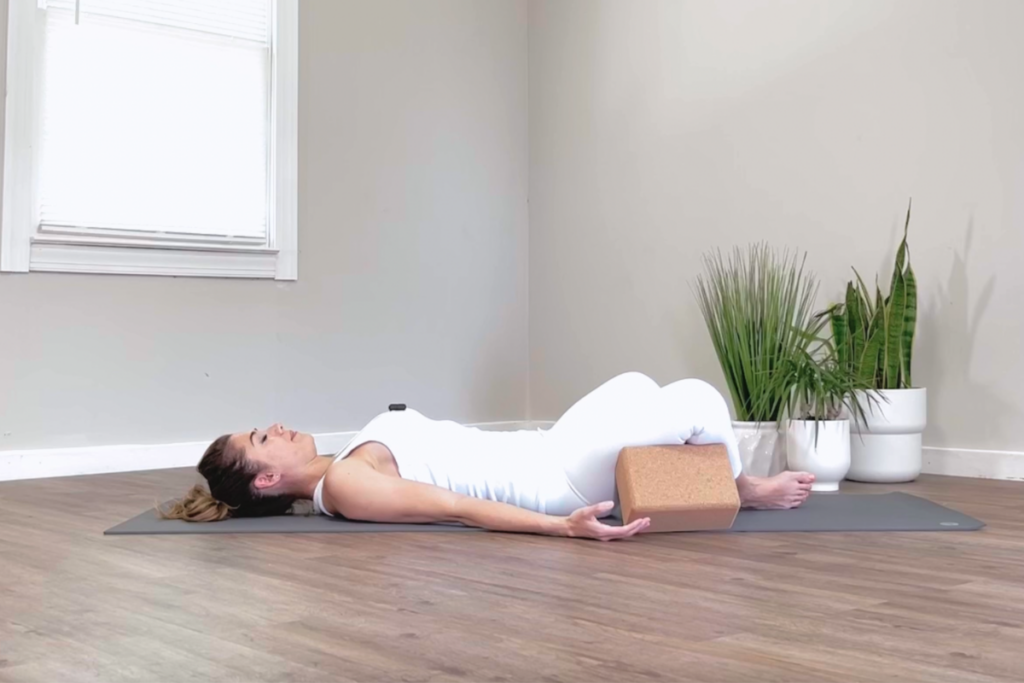
Reason: You want a hip opener.
How to do it:
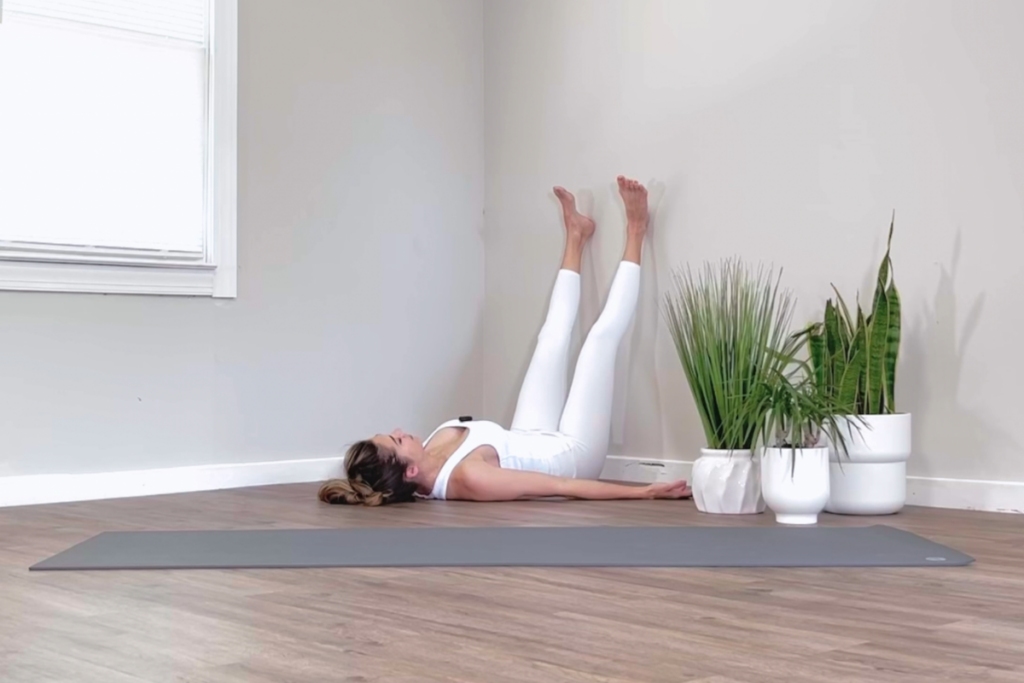
Reason: You’ve been on your feet all day, you want to practice an easy inversion, or it sounds like fun.
How to do it:
Reason: To reduce tension in the low back, you have tight hamstrings, you’re knees feel tight, or they easily hyperextend.
How to do it:
Reason: To create a deepened sense of safety and security
How to do it:
There are a variety of arm variations, in the end, it’s about being comfortable. Choose which works best for you.
Reason: Your pectoralis (chest) muscles are tight, or you just want to.
How to do it:
Reason: You want to feel your heartbeat, or those pecs are tight.
How to do it:
Reason: Feel the wave of breath
How to do it:
Props can add a level of comfort to the pose you can’t find on a 3mm yoga mat plopped down on a hard floor. Savasana is about feeling safe and secure and allowing the body to settle so the mind can follow. There are several ways to use props above, but here are a few more that can’t be broken up into the categories above.
Reason: You easily get cold or move around. You sleep better with a weighted blanket.
How to do it:
Reason: You feel anxious or your mind is all over the place.
How to do it:
Reason: You furrow your brow, or struggle to still the mind.
How to do it:
You’re warm. Your legs, hips, shoulders, and forehead are soft. The tension is melting away… ahhhhhh
WAIT! WAIT! Don’t fall asleep!
There are two struggles in savasana.
If your mind is racing, falling asleep will not be your problem, you’ll have a harder time not running to your phone to add parsley to your shopping list, and you just remembered – dishwashing detergent, too. (You might even sneak out so you can get to the store and home before your favorite show comes on TV).
Your mind is distracting you from finding serenity.
To distract your mind from constant thoughts, use focused concentration.
The mind wants to drift off and reprogram itself when we want to fall asleep. To counter the sleepiness during savasana find something to focus on to help you stay awake.
It doesn’t matter if you’re mind is running a mile-a-minute or if you start to snore, the tips below are useful for both. Finding something to focus on is the trick to being successful in savasana. I’ve created a more detailed list of 12 ways to help you find focus in savasana. Sign up for my newsletter to get your copy sent to your inbox.
Here are a few ideas:
Sign up for my newsletter and get a complete list of 12 ways to focus the mind during savasana.
A bonus to savasana – since its a mindful/meditation practice – you create space in your mind, so you don’t forget to put parsley on your shopping list.
Sign up for my newsletter and get my 12 ways to still the chatter in your mind during savasana AND 1 min checklist to reduce stress, anxiety, and pain + guided audio.
Privacy is important. I won’t sell your info. I promise.